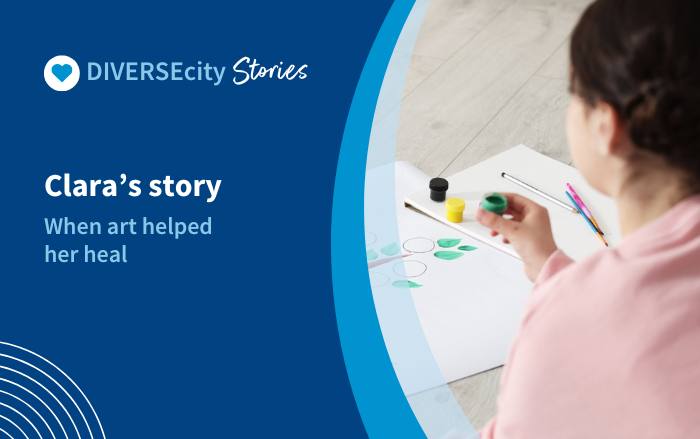For eight-year-old Clara*, silence became her shield.
After the sudden loss of her father to a toxic combination of substance use, grief left her quiet and withdrawn — hesitant to speak, hesitant to play and hesitant to trust. At school, she often sat alone, unable to connect with her peers, weighed down by a pain too big for words.
Through DIVERSEcity’s Child and Youth Mental Health Counselling program, clinical counsellor Gisèle welcomed Clara into a gentle, healing space. Through art and play therapy, Clara found the ability to express her emotions — painting her sadness, drumming her anger and giggling in therapeutic games that slowly built connection. Over time, Clara began to name her feelings: “I’m sad. I’m scared.”
As Clara’s confidence grew, so did her world. She joined the music club at school. She tried new activities like skateboarding for the first time — as her grief made room for curiosity and playfulness. Sleepovers with friends became fun, not frightening. Gisèle also worked closely with Clara’s mother through psychoeducation and grief support, helping her find clear, compassionate and age-appropriate language to speak openly with Clara and her older siblings. Together, they created a home where emotions were now named, heard and held.
By the end of counselling, her family was no longer just surviving — they were moving forward, together, connected by strength and openness.
Because healing, as Gisèle shares, “is relational. It requires people closest to the child to listen, to change and to create a safe emotional climate where the child’s new skills can take root, allowing them to heal and move on.”
*Name changed for privacy

